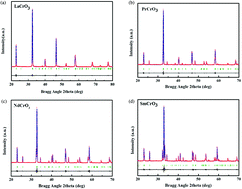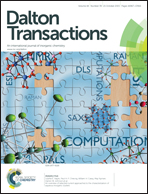Low temperature hydrothermal synthesis, structure and magnetic properties of RECrO3 (RE = La, Pr, Nd, Sm)
Abstract
Perovskite structured rare-earth chromites (RECrO3) are an interesting family of functional materials due to their wide application in numerous areas. Various methods have been used to synthesize this family of materials; however, such methods usually need a high temperature crystallization process above 800 °C, and only produce polycrystalline ceramics. Herein, a series of RECrO3 single crystal samples with uniform particle sizes were prepared via a mild hydrothermal method with temperatures as low as 240–260 °C, and the synthesis conditions were studied in detail. Samples of LaCrO3, PrCrO3, and NdCrO3 were indexed to the Pnma space group, whereas SmCrO3 was indexed to Pbnm. The shapes of the crystals changed from cubic to plate as a result of the crystal lattice distortions induced by the reduction in the size of the A-site rare-earth cation. Raman spectra of the samples showed characteristic vibration modes of CrO6 clusters. Temperature dependent magnetization studies showed a transition from antiferromagnetism to paramagnetism in all the samples. Higher maximum and residual magnetization was achieved in all the hydrothermally prepared samples compared with those prepared by other methods.


 Please wait while we load your content...
Please wait while we load your content...